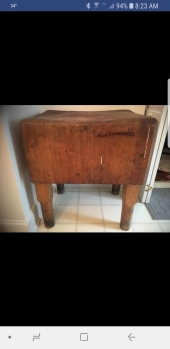OK so 3-4 years ago I discovered I had RKN in a couple of small garden beds. They had been planted in carrots. The crop was a total loss; not only were they ugly they tasted nasty. I pulled up everyone, cut the greens off for the chickens and threw the roots in the trash, along with some weeds that were in there. That fall I planted them with cilantro and giant red mustard. Both crops were picked, eaten and sold. In spring when they started to bolt I reversed the plantings and again, picked, ate and sold them. The next year I grew potatoes under a thick straw mulch and they were fine.
Unfortunately before I discovered I had RKN I had put a lot of stuff into the compost piles which at that time were being worked by chickens in a new garden area. I was totally pumped to have 300 sq ft of new bed space to work with. I planted a lot in a rainbow of potatoes with drip irrigation and heavy straw mulch. One bed I planted in cabbage and one in favas. Raging disappointment! the potatoes had odd bumps, tasted nasty and rotted quickly, even in the fridge. Just as the favas bloomed they were totally covered in aphids and died. The cabbages weren't too bad, but small and lightweight. Succession crops of sunflowers, tomatoes and other veg started off good, then looked like they weren't getting enough water. I was watering all the time (from this thread I've just learned that just grew more RKN!) I pulled up a couple of tomatoes and sunflowers up. Their roots were gnarly!
I pulled up every plant and stuffed it in trash bags, taking as much soil and roots with it as I could. I bought some neem based nematocide. I soaked each hole where I'd pulled up a plant with it and experimented. One bed got broccoli and cauliflower, winter crops here. (RKN are not active in soil under 60 degrees). They did reasonably well. One bed got a mixed cover crop which included mustard, field peas, radish and other things. It did well until it warmed up in spring when it croaked. Some of the mustard did make seed tho so I knocked it all down to let the seed sprout.
The end of two beds are being overrun with bermuda grass which came in on some manure. The grass is lush and green. Nothing else has done too well this year, although I have had a good number of volunteer sunflowers and so far they look pretty good.
This fall I intend to plant more mustard, broccoli and cauliflower. This year I tried to get marigolds started but even they are not doing so good. Really considering putting chickens back in there for a year or two since they would eat every bit of green, which would hopefully starve out the RKN.
I did buy a micharizal innoculant (however you spell it!) and have been inoculating my seeds and transplants. I have been working to add minerals that my soil test indicates I need, but maybe I haven't put enough down in that garden yet. So that's where I"m at right now. I have lots of earthworms all over.
I have been hesitant to use the nematocide much, as I thought it would possibly kill other things and knock things more out of kilter, even tho it's OMRI certified. However, I do intend to drench any nursery stock I bring in in the future, before planting out. That should prevent getting them again from the outside- they aren't native here and that's the only way to get them. figure if I drench them and then hold them a few days or a week, then innoculate with the fungal innoculant things should go well.
One other garden space was so totally infested with RKN (apparently I was spreading it around in the compost) that I did just put chickens and some ducks in there. They have been on that piece almost a year now. Hopefully by the time I get them moved to a new spot the RKN will have died off for lack of food. That space is totally surrounded by hot dry, cementlike caliche so I don't think they could migrate anywhere else









